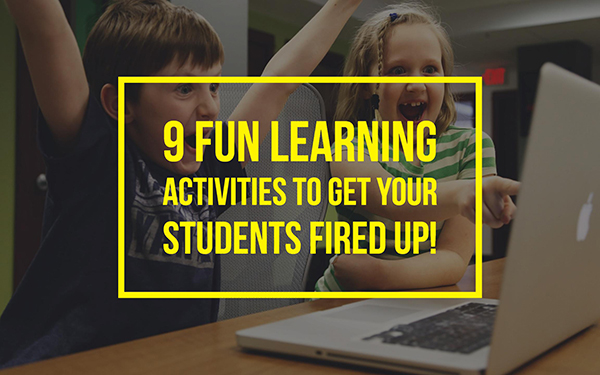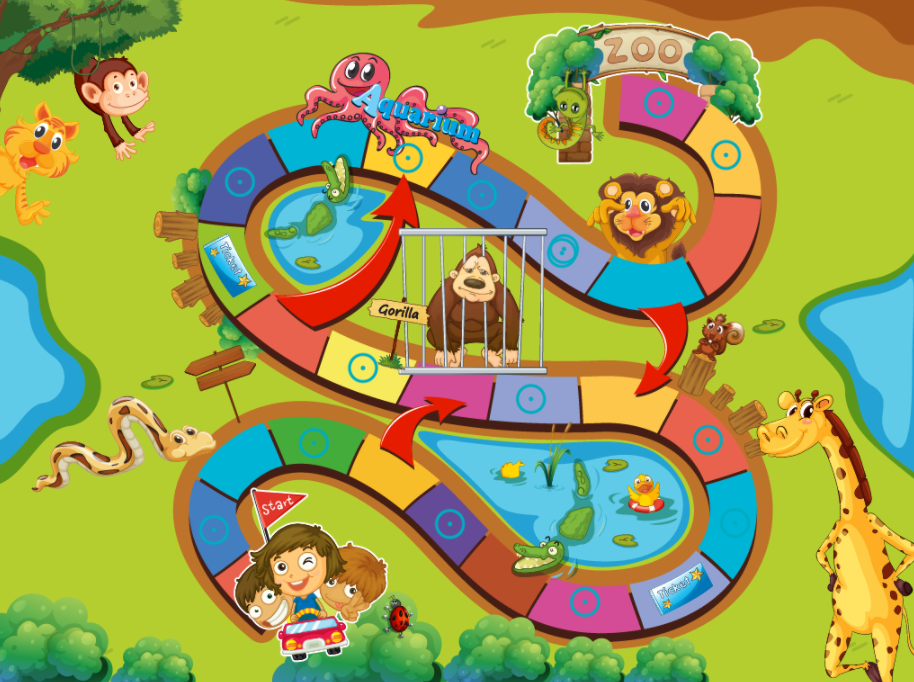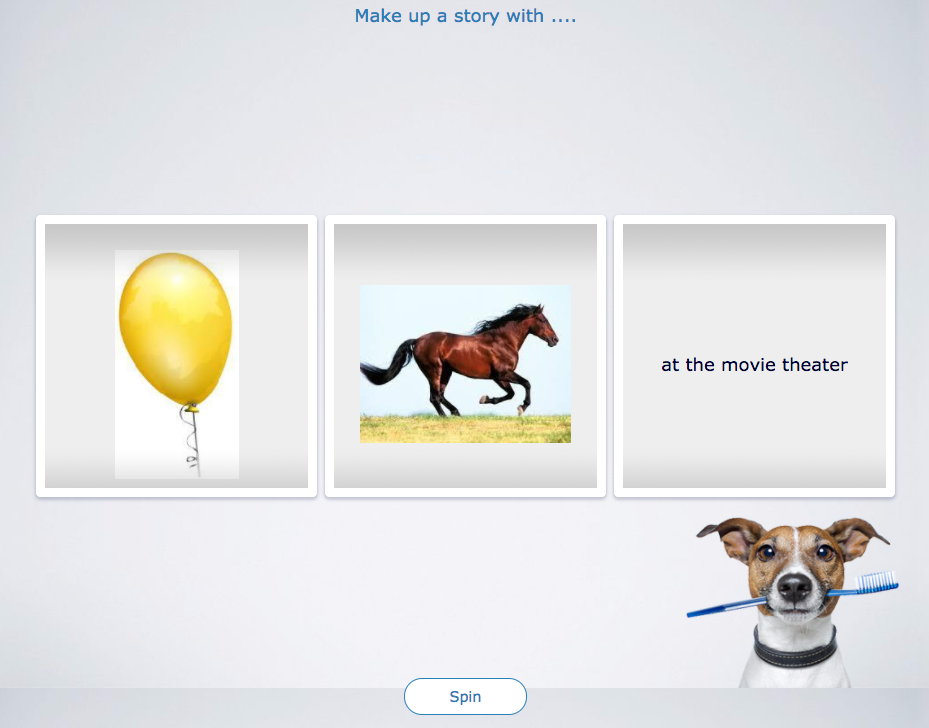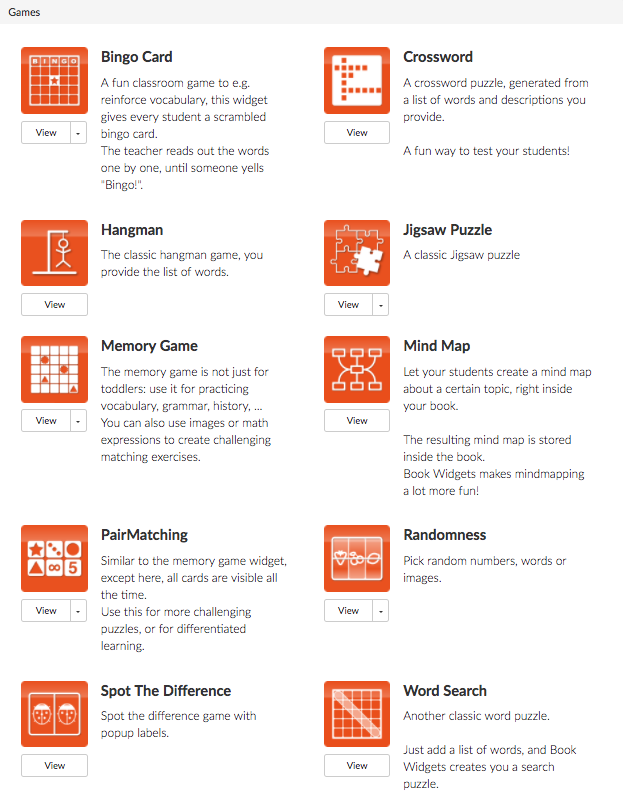9 Fun Classroom Activities to get your Students Moving
 Lucie Renard —
Lucie Renard —
School can be boring. That’s a fact. And it’s often due to one thing: no activity. Students go to school, and sit on a school desk for about 6 hours. Between those hours, they get some short breaks. But that doesn’t mean they are playing football, dancing, running wild on the playground. No, most of the time, they stand still, talking to their friends.
So how do you get your students active during class? That’s the question I’ll answer in this blog post.
Grow your brain by moving your body
 “I like to move it, move it”. If your students saw the movie “Madagascar”, you probably know that they can’t help shaking their body while singing aloud to this catchy song.
“I like to move it, move it”. If your students saw the movie “Madagascar”, you probably know that they can’t help shaking their body while singing aloud to this catchy song.
But they won’t in class. Because class is supposed to be boring and quiet. Of course, you know that that’s not true. You’re actually trying to inspire your students. So what can you do more? Make your classroom an interactive and healthy environment.
A recent study showed me that walking 30 to 40 minutes a day, three times a week helped to regrow the structures of the brain linked to cognitive decline in older adults. You could compare this effect with stopping the brain’s aging clock by one to two years.
This is one of the first studies showing the power of exercise in boosting brain regeneration. Physical activity during and after school is smart for your heart, body and brain.
“Exercise is really good for the brain, not the body. It affects mood, vitality, alertness and feelings of well-being.” - WebMD article.
3 Tips to combine activity and learning
Tip 1 -Use different materials
Not everything has to be on paper. There are so many different materials that create motion in the classroom. Take a look at the following examples. It includes playful teaching methods, along with an example that can be used in general, so it’s not linked to lesson content.
1. Fly swatter
 Yes, you heard it right. A fly swatter can also be a learning material. Check out the classroom activity in the picture below.
Yes, you heard it right. A fly swatter can also be a learning material. Check out the classroom activity in the picture below.
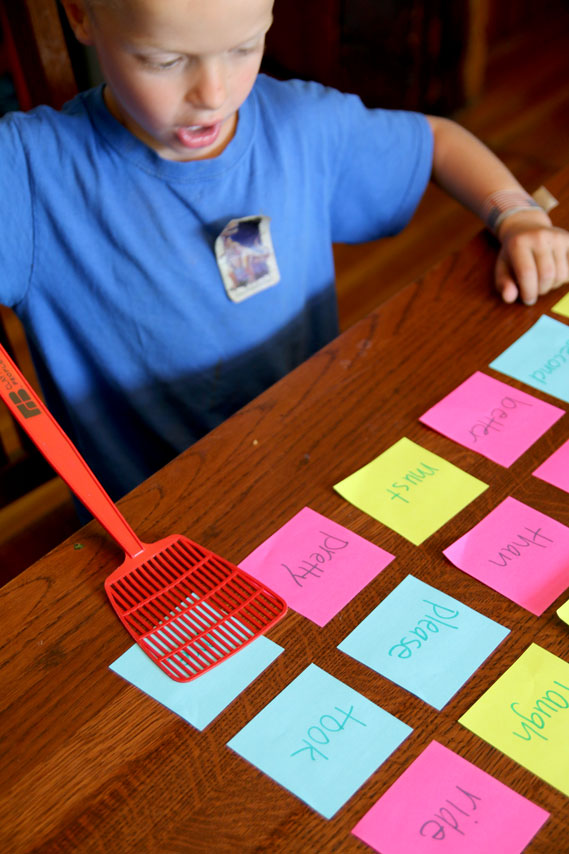
Use post-it’s to create a large square with new words on it. Let the students sit in pairs and give them each a fly swatter.
Go stand in front of the class and say a word in English. Your students have to find the right translation as fast as possible. The first student who hits the right translation post-it, gets to keep it. The student who has the most post-it’s, wins.
This fun and active game isn’t only for language classes. Every course has its definitions. The teacher in front of the class has to say a definition, and the students have to find the right term on their post-it square. Even older students will enjoy this exercise!
For math, you can write down a calculation on the whiteboard. The answers are in the post-it square and students have to find the right answer as fast as possible.
2. IMO-LEARN
 When you want your students to be completely interactive, you should take a look at IMO LEARN. It looks like so much fun!
When you want your students to be completely interactive, you should take a look at IMO LEARN. It looks like so much fun!
Students use learning blocks to answer questions. They have to shake, wiggle, hit or turn their blocks in order to give the right answer. The blocks are connected to the questions and sense the movement. In no time, the teacher can show the student’s answer on the board.
IMO LEARN has a few inspirational videos on their i3-Technologies YouTube Channel.
3. Bouncy Bands
 Bouncy bands are the new trend in the classroom. Without a shadow of a doubt. Bouncy bands are elastic foot rests, attached to a student’s chair or desk front legs. This way, students can move while they are working.
Bouncy bands are the new trend in the classroom. Without a shadow of a doubt. Bouncy bands are elastic foot rests, attached to a student’s chair or desk front legs. This way, students can move while they are working.
They can stretch their legs, and bounce their feet. They can get rid of their frustration and hyperactivity in some way. Teachers are very positive about these bands, because active students are not disturbing other students anymore.
Okay, it can be a bit annoying when you focus on your students’ feet. But apparently, it also helps your hyperactive students to concentrate better.

Tip 2 - Go outside
Teachers love their classroom. They put a lot of work into it and are used to teaching in their classroom. And of course, that’s absolutely normal. But that makes learning passive. Try to go outside with your students. There are so many things you can do to get your students actively involved. Take a look at the active learning activities below.
4. Parcour quiz
 In my previous life (just a few years ago) I was an animator at a girls and boys scouts. We took the traditional quizzes to a whole new level by linking them to an outside parcour.
In my previous life (just a few years ago) I was an animator at a girls and boys scouts. We took the traditional quizzes to a whole new level by linking them to an outside parcour.
The kids had to complete the parcour first before they could answer a question. On the parcour I would hang some papers with tips on them. They could collect the tips and use them to form their answer.
Why not do this in school? The playground is already used too little. Put together a simple parcour, with chairs, broomsticks, skipping ropes, tenpins, and so on. It doesn’t even have to be a difficult parcour.
Two students race against each other. Let them stop at a few places, where they have to do a physical activity in order to gain tips. This is really fun, educational, competitive and interactive. Your students will love it!
5. Sight word soccer
 This one looks a lot like the fly swatter exercise, but is more interactive and requires a little bit more room, concentration and skills.
This one looks a lot like the fly swatter exercise, but is more interactive and requires a little bit more room, concentration and skills.
Randomly place some cones with definition terms, foreign language words or math outcomes on them across the playground. Make sure there’s a goal and you have some footballs available.
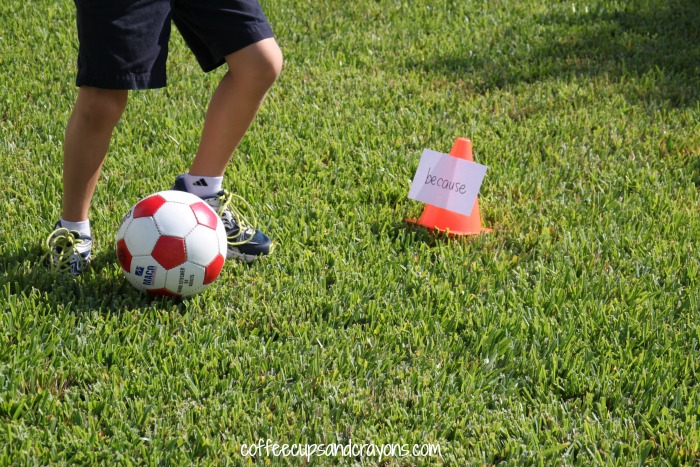
Place 3 students at the start and shout out a definition, a calculation or a word in English or a foreign language. Then those 3 students have to dribble to the right cone with the right answer. After they find the right cone, they may try to score a goal.
It’s that simple! Make it harder by putting more distance between the cones, choosing more difficult words, or minimizing the goal.
6. QR- codes
 QR-codes are an upcoming trend in education, and they should be. Today they are often used within the classroom for corner work, which makes them more static.
QR-codes are an upcoming trend in education, and they should be. Today they are often used within the classroom for corner work, which makes them more static.
You can also use QR-codes in the hallways and on the playground. Let your students go on a quest by searching the QR-codes and solving questions and riddles related to your lesson material.
In the end, your students should be able to come to a conclusion. Every solved riddle can give them a letter or a digit they need in order to unlock a chapter or a box.
Certainly, these are just a limited selection of outdoor activities at your disposal. If you’re seeking further inspiration, consider checking out our blog post, where we present enjoyable apps and lesson ideas for the outdoor classroom.
Tip 3 - Play games
Gamification is all about playing games in education. Think twice before you say that gamification is too childish and doesn’t concern you. It can bring magic into your classroom. Discover a few engaging activities below.
7. Twister
 Think about your childhood. What games did you play all the time? You’ve probably played Twister when you were young.
Think about your childhood. What games did you play all the time? You’ve probably played Twister when you were young.
The game is on the shelves since 1966 and it’s still a hit with students today. Reinvent the classic game to a fun, active exercise that relates to your lesson topics.
Stick some words, terms and letters in the Twister colors. Let your students play the game. Now they have to connect the words or letters by making a good example sentence.
For math, you can put numbers on the Twister colors. Students have to sum, subtract, divide or multiply the numbers with each other.
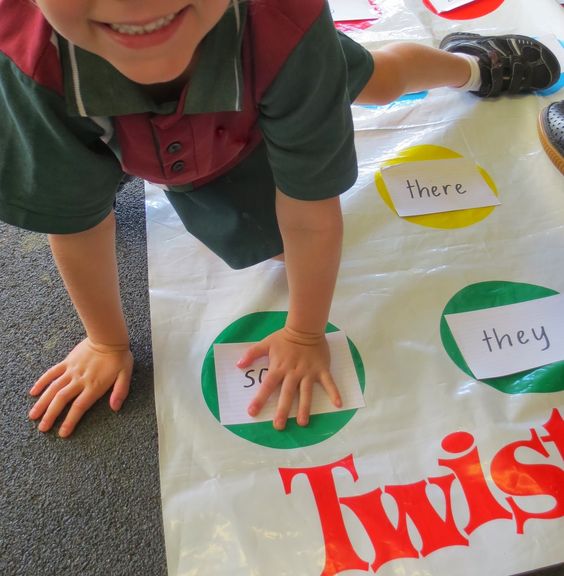
8. Game of goose
 This is a game with endless possibilities. You choose what you put in the squares of the board game. It’s an example of an active teaching technique.
This is a game with endless possibilities. You choose what you put in the squares of the board game. It’s an example of an active teaching technique.
You can make it yourself, or you can let your students make a goose board. Split your class into 4 groups and let them choose which questions about the lesson material they want to feature in their game. As they do that, they are already rehearsing the material.
Making a goose board offers different tasks. Not a single student is doing the same task over and over again. It takes skills, collaboration and good communication. While working together they are also active in the classroom.
On top of that, I’ve got another great idea for you. A while back, I’ve written a post about energizers in the classroom.
Bart has turned those classroom energizers into a nice hotspot image, representing the game of goose. Take a look at the post, and then click on the image of the goose board below. Fun guaranteed!
9. BookWidgets
 Finally, you can always use the games available in BookWidgets. Make your own crossword puzzle, bingo sheet, memory, pair matching exercise, hangman, spot the difference exercise and so on.
Finally, you can always use the games available in BookWidgets. Make your own crossword puzzle, bingo sheet, memory, pair matching exercise, hangman, spot the difference exercise and so on.
Put your own lesson material in the different game templates and let your students learn while playing. Take a look at the games below. Click on the images to try them out yourself!
In the exercise above, students have to find the right matching calculation. They also have to remember where the cards are placed.
This game is called “randomness”. Here, it’s used for an art class. Students go sit in pairs, spin the wheel, and have to make an artwork with emojis from 3 different wheels. It’s an amazing exercise with a lot of fantasy. You can even make a speaking activity out of it!
For more examples, you can visit the widget library. Take a look at the games. Click on the view button beneath them to see a few examples. These are just examples, you can put everything you want in those game templates.
But wait, there’s more! You can monitor students’ activities on BookWidgets through Live widgets. This feature functions with any LMS integration supported by BookWidgets. You will be able to keep an overview of the entire class’s progress and review individual student performances as well. Let me give you an example. Start Pictionary using the Whiteboard and display the Live Widgets dashboard on the smartboard so everyone can see the drawing. When someone knows the answer, they should jump up and give their answer. Check it out👇
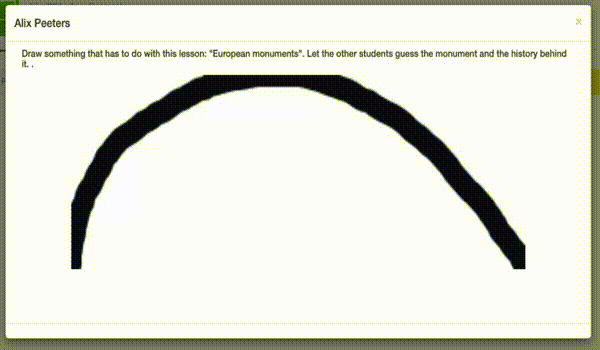
Wrap up
Let your creativity and thoughts run wild when you’re thinking about movement integration. The possibilities are endless, so explore without any limits!
Share the activities you’ve tried on Twitter and mention @ibookwidgets in your post. Also, be sure to check our page. If you’re looking for more ideas on using BookWidgets, join our Facebook group called “Teaching with BookWidgets”.
I would like to mention that you’re always welcome to find me on LinkedIn if you would like to connect! Now, start unleashing your imagination!

